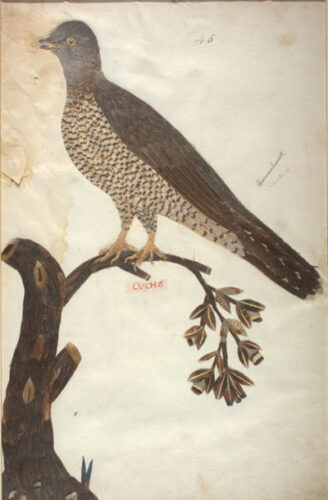This article was first published in the September 2024 issue of EMAg, the Magazine of Early Music America

In the summer, I sit on a little mountaintop, contemplating a lot of bigger mountaintops all around. You don’t hear or see the cars, you don’t see the cement factories down toward Arezzo, you just hear sheep bells, the occasional sheepdog barking, and the birds. If I had several lives, I think I’d spend the next one learning birdsongs; they are marvelous things, and I guess many of us don’t have time enough, or quiet enough, to listen to them.
But a great many musicians have listened to, imitated, and been inspired by the birds. Olivier Messiaen spent a lot of his life listening to the birds, and much of it comes out in very beautiful music. Italian composers listened to the birds, too: Respighi has a bird-song piece, and Vivaldi placed plenty of birds in The Four Seasons.
Most early-music lovers will have no trouble adding to the impromptu list of historical birds flying through my memory. It’s a sort of natural music far beyond our ability to understand or reproduce. Our attempts at repeating birdsong may be very poor imitations, but at the same time we have been moved to compose, perform, and hear music that would not be what it is were it not for that avian inspiration.
Birds represent nature, spring, love. There’s a 13th-century motet that begins one of its voices this way:
Quant voi la rose espanie,
L’erbe vert et le tens cler
et le roussignol chanter,
adonc fine amour m’envie
de joie faire et mener…
The rossignol, the nightingale, appears all over the place, and has inspired listeners to amorous thoughts for a long time, from that anonymous motet to Stravinsky and beyond. I remember a wonderful evening in 1974, perhaps, when the great Andrea von Ramm came to my music festival in Massachusetts; the first thing that fascinated her was the multilingual song of a mockingbird, which she had never heard before. She had brought with her, as her opening number, a piece by Sigismondo D’India, “Odi quel rossignol.” She sang it from a darkened corner where nobody could see her because, she said, you never see the bird in the night. Her haunting voice was like that of the nightingale.
Birdsong pieces were very much in vogue in the late 14th century, which Elizabeth Eva Leach wrote about in her important study called Sung Birds. In the 16th century, Clément Janequin’s “Le chant des oyseaulx” gave us an almost exhaustive catalogue:
Think of the opportunities that birdsong has provided to composers of Baroque arias; everybody has favorites, I’m sure. Among mine, the couple of birdsong arias in Handel’s Acis and Galatea will be known to many of us: “Hush, ye pretty warbling choir” (where, of course, the choir does not hush), and “As when the dove laments her love,” with a lot of billing and cooing.
A special treat for me here in Tuscany is the cuckoo. We all know what they sound like because we’ve all heard clocks, and we’ve heard cuckoos in music. There’s one in Beethoven’s Pastoral Symphony and one in Saint-Saëns’ Carnival of the Animals, another in the “Toy” Symphony that used to be by Haydn, and there are plenty of others besides. But you don’t hear that same familiar song in America since it’s sung by the European species. And you never see the cuckoo; you hear it in the woods. I suppose that’s why Saint-Saëns sends the clarinet player offstage. And about the end of June, when it gets hot, when the fireflies are at their peak, the cuckoo’s song disappears.
Thomas Forrest Kelly is Morton B. Knafel Professor of Music at Harvard. He previously directed early-music programs at Wellesley, the Five Colleges, and Oberlin. He is past president and a long-time board member of Early Music America and the author, most recently, of Capturing Music: The Story of Notation (W.W. Norton).

